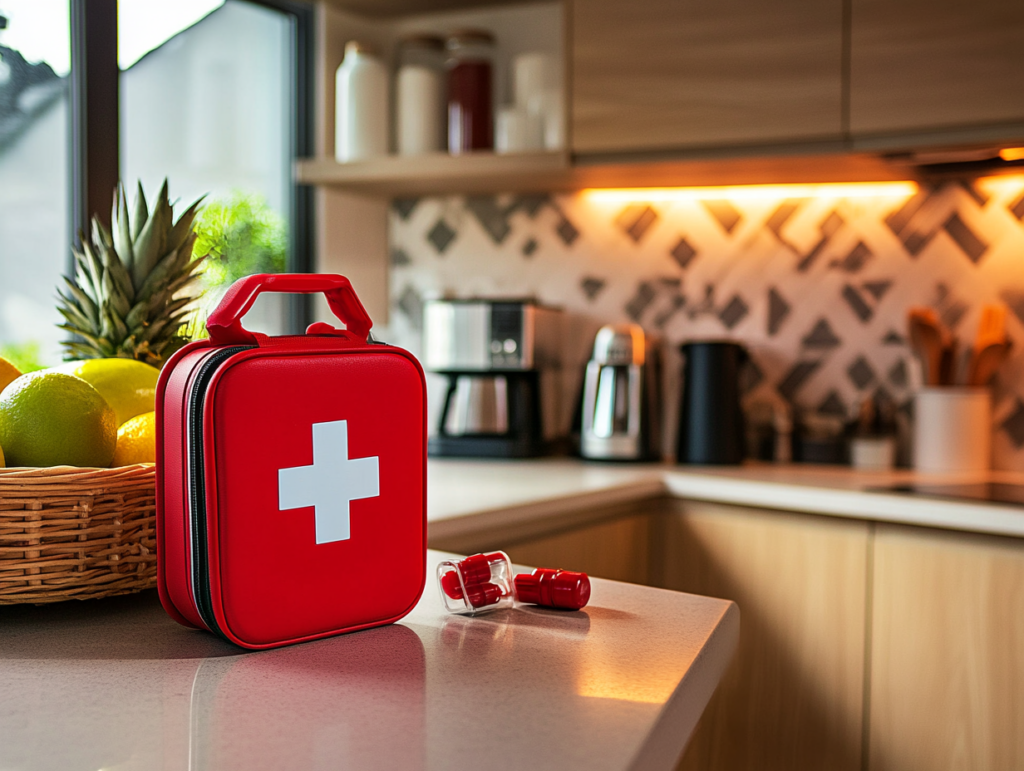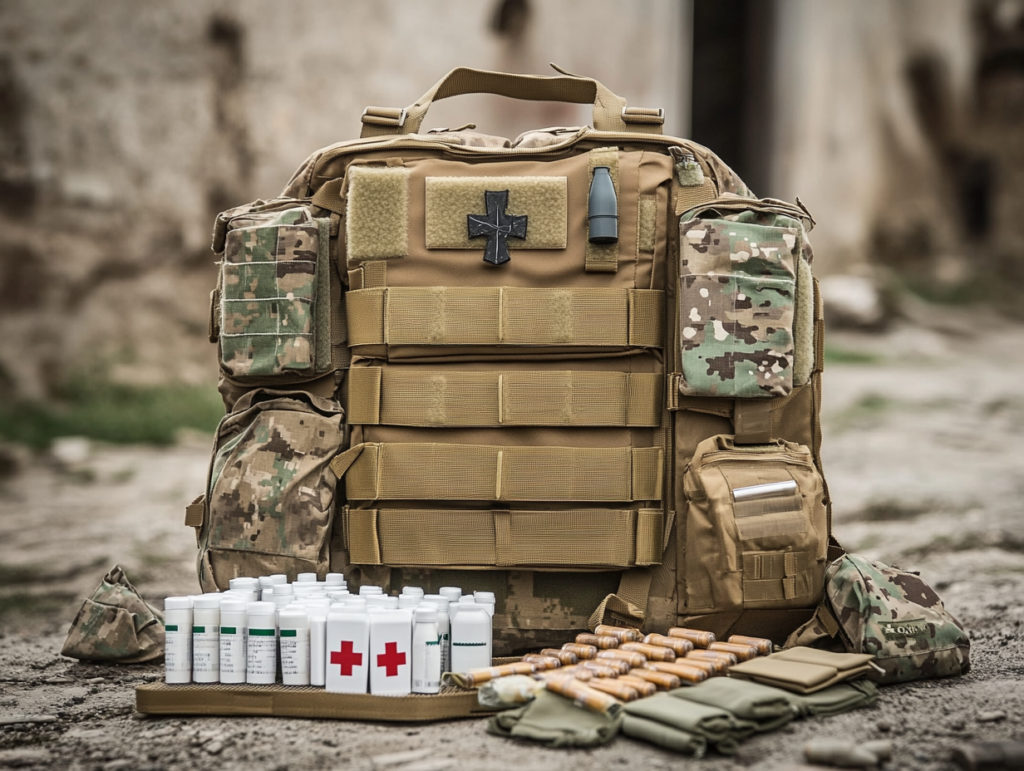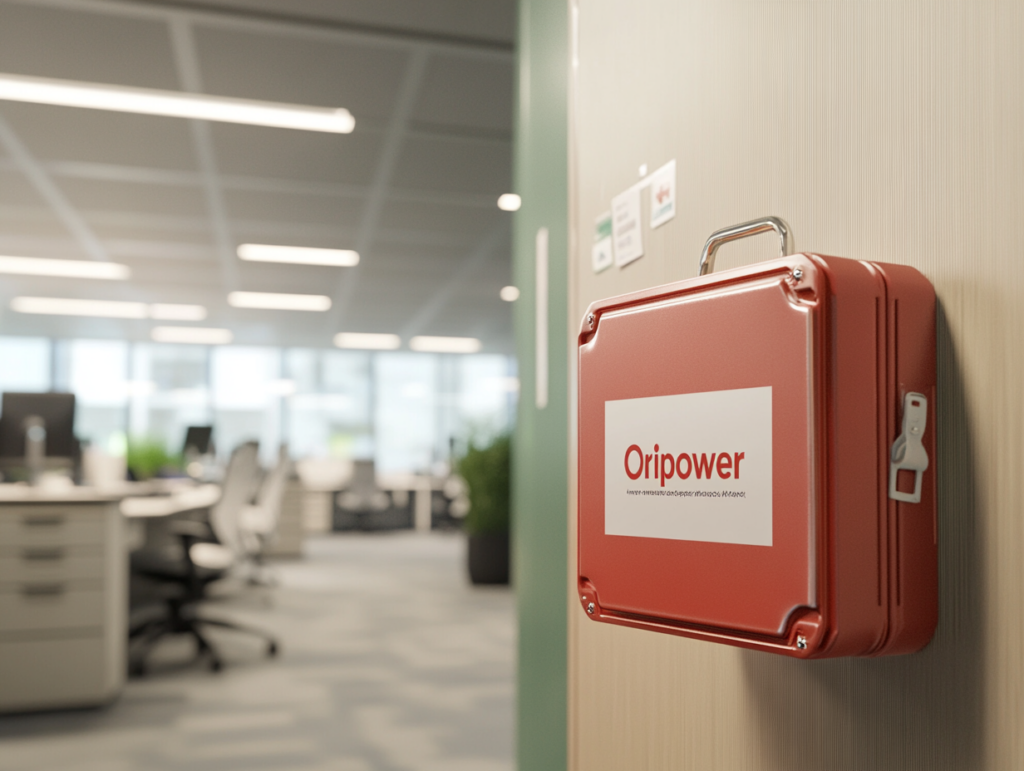- Why a Well-Stocked First Aid Kit is Non-Negotiable
- A List of Essential Items in a Family First Aid Kit
- 1. Adhesive Bandages
- 2. Sterile Gauze Pads and Bandages
- 3. Antiseptic Wipes and Alcohol Pads
- 4. Antibiotic Ointment
- 5. Hydrocortisone Cream
- 6. Pain Relievers (Ibuprofen and Acetaminophen)
- 7. Tweezers
- 8. Thermometer
- 9. Instant Cold Packs
- 10. Elastic Bandage
- 11. Burn Cream and Aloe Vera Gel
- 12. Cotton Balls and Swabs
- 13. Scissors (Medical Shears)
- 14. Eye Wash or Eye Drops
- 15. First Aid Manual or Instruction Sheet
- 16. Medical Tape
- 17. Personal Medications and Prescriptions
- 18. Face Masks and Gloves
- Bonus Tips for Maintaining Your First Aid Kit
- Conclusion: Be Prepared, Be Proactive
In our daily lives, accidents and minor medical emergencies can strike when we least expect them. Whether it’s a child’s scraped knee from a tumble in the backyard, a sudden fever that makes you feel under the weather, or a minor burn from a hot cooking pan, having a well-stocked family first aid kit on hand can be the difference between a quick recovery and a potential medical nightmare. This comprehensive guide will walk you through everything you need to know about assembling the perfect first aid kit for your home, ensuring you’re always prepared for life’s little (and not-so-little) health hiccups.
Why a Well-Stocked First Aid Kit is Non-Negotiable
When it comes to the health and safety of our loved ones, prevention and preparedness are key. A family first aid kit serves as your first line of defense during those unexpected moments. Firstly, it enables an immediate and effective response to injuries. In the chaos that often follows an accident, having all the necessary supplies within arm’s reach means you can start treating the wound right away, stopping bleeding, cleaning cuts, and preventing infections before they take hold.Our family first aid kits come fully equipped with all the essentials needed for emergency situations. Explore our range of options to find the perfect kit for your needs.
Secondly, it significantly reduces the risks of complications. Minor cuts, if not properly cleaned and dressed, can quickly turn into nasty infections that may require a trip to the doctor, antibiotics, and days of discomfort. By having antiseptics, sterile gauze, and antibiotic ointment readily available, you’re giving the body the best chance to heal naturally and without complications.
Last but not least, a well-equipped first aid kit provides instant relief. Pain relievers like ibuprofen and acetaminophen can ease a throbbing headache or the discomfort from a sprained ankle, allowing the affected family member to relax and recover more comfortably. It’s not just about physical healing; it’s about providing peace of mind for the whole family, knowing that you have the tools to handle whatever comes your way.
A List of Essential Items in a Family First Aid Kit
1. Adhesive Bandages
These are the workhorses of any first aid kit. Available in various sizes, from tiny fingertip bandages to large ones for elbows and knees, they’re perfect for covering small cuts and scrapes. Opt for waterproof varieties if you have active kids who love splashing around in puddles or swimming pools, ensuring the wound stays protected even when wet.
2. Sterile Gauze Pads and Bandages
When dealing with larger wounds or heavy bleeding, sterile gauze pads are indispensable. They absorb blood effectively and provide a clean surface for wound dressing. Rolled gauze bandages are great for wrapping around the affected area, securing the gauze pad in place, and applying gentle pressure to stop bleeding. Make sure to have different widths on hand to accommodate various body parts.
3. Antiseptic Wipes and Alcohol Pads
Cleaning a wound is the first and most crucial step in preventing infections. Antiseptic wipes, often containing ingredients like benzalkonium chloride, are gentle on the skin yet powerful enough to kill bacteria. Alcohol pads are another excellent option, especially for disinfecting tools like tweezers before using them to remove splinters.
4. Antibiotic Ointment
A thin layer of antibiotic ointment, such as Neosporin, can work wonders on cuts and abrasions. It helps keep the wound moist, which promotes faster healing, and fights off common bacteria that could cause infections. Apply it after cleaning the wound and before covering it with a bandage.
5. Hydrocortisone Cream
For itchy skin conditions like insect bites, rashes, or mild allergic reactions, hydrocortisone cream is a godsend. It reduces inflammation and itching, providing much-needed relief. Keep it in your kit to soothe those pesky bug bites during the summer months or when skin irritations occur.
6. Pain Relievers (Ibuprofen and Acetaminophen)
Fever, headaches, body aches, and menstrual cramps are no match for these over-the-counter pain relievers. Ibuprofen is an anti-inflammatory, making it ideal for muscle strains and joint pain, while acetaminophen is gentler on the stomach and effective for general pain and fever reduction. Stock up on both to cover a wide range of discomforts.
7. Tweezers
Splinters, thorns, and small debris that get lodged in the skin are a common occurrence, especially for kids who love exploring outdoors. A pair of sharp, precision tweezers will help you remove these foreign objects safely and easily. Look for ones with a pointed tip and good grip for maximum control.
8. Thermometer
Monitoring body temperature is essential when someone in the family falls ill. Digital thermometers are the most accurate and user-friendly option these days. You can choose from oral, ear, or forehead thermometers, depending on your family’s preferences and the age of your members. Forehead thermometers are particularly handy for fussy toddlers who won’t sit still for an oral reading.
9. Instant Cold Packs
Sprains, strains, and bumps are inevitable in an active household. Instant cold packs, which activate with a simple squeeze, provide immediate cold therapy to reduce swelling and numb pain. They’re a must-have for sports injuries or any sudden bumps and bruises.
10. Elastic Bandage
Also known as an ACE bandage, this is crucial for wrapping sprained ankles, wrists, or knees. It provides support and compression, helping to reduce swelling and stabilize the injured joint. Make sure to learn the proper wrapping techniques to get the most benefit from it.
11. Burn Cream and Aloe Vera Gel
Kitchen mishaps and accidental touches of hot objects can result in burns. Burn cream helps soothe the pain, prevent blistering, and promote healing. Aloe vera gel, on the other hand, is a natural alternative that’s great for mild sunburns. It has cooling properties and can reduce redness and discomfort.
12. Cotton Balls and Swabs
These are versatile tools in a first aid kit. Use cotton balls to apply antiseptics or ointments gently, and swabs are perfect for cleaning around wounds or ears, getting into those hard-to-reach areas with precision.
13. Scissors (Medical Shears)
When you need to cut bandages, gauze, or clothing away from an injured area, a pair of sharp medical shears is essential. They’re designed to cut through fabric easily without snagging and are safe to use around the skin.
14. Eye Wash or Eye Drops
Dust, debris, or chemicals can accidentally get into the eyes, causing irritation and pain. Eye wash solutions are formulated to flush out foreign particles safely, while eye drops can provide relief from dryness or minor eye infections. Keep them in your kit for quick eye care.
15. First Aid Manual or Instruction Sheet
Even if you’re well-versed in first aid basics, it’s always helpful to have a comprehensive manual or instruction sheet on hand. It can guide you through more complex procedures, provide information on when to seek professional medical help, and offer tips on handling specific emergencies.
16. Medical Tape
Medical tape is used to secure bandages and gauze in place firmly. It’s designed to be gentle on the skin, yet adhesive enough to hold everything together, even during movement. Look for hypoallergenic options if you have family members with sensitive skin.
17. Personal Medications and Prescriptions
If any family member has a chronic condition like asthma, diabetes, or epilepsy, make sure to include their essential medications and prescriptions in the first aid kit. This ensures they have access to their life-saving drugs in case of an emergency or if they forget to take them on time.
18. Face Masks and Gloves
In today’s world, protecting yourself and your family from infectious diseases is more important than ever. Face masks, both surgical and N95 varieties, can prevent the spread of germs, while gloves provide a barrier when handling wounds or bodily fluids, keeping you safe from potential infections.
Bonus Tips for Maintaining Your First Aid Kit
Building a first aid kit is just the first step; maintaining it is equally crucial. Regularly check the expiration dates of all medications and supplies. Expired pain relievers may not be as effective, and expired antiseptics could lose their germ-killing power. Replace any used or depleted items immediately after use, so your kit is always fully stocked and ready for action.
Keep your first aid kit in an accessible location, preferably in a central part of your home, like the kitchen or bathroom. Avoid storing it in hard-to-reach cabinets or basements where it might take precious minutes to retrieve during an emergency. Also, make sure everyone in the family knows where the kit is located and how to use its contents.
Conclusion: Be Prepared, Be Proactive
In conclusion, a well-stocked family first aid kit is an investment in the health and safety of your loved ones. It’s not just a collection of medical supplies; it’s a symbol of preparedness, a shield against the unexpected, and a source of comfort during difficult times. By assembling the essential items listed above and following our maintenance tips, you’re taking a proactive step towards safeguarding your family’s well-being.
Don’t wait for an accident or illness to strike before realizing the importance of a first aid kit. Head to your local pharmacy or shop online today to gather all the necessary supplies. Remember, peace of mind is priceless, and with a comprehensive first aid kit at home, you can face any minor medical emergency with confidence. So, take action now and give your family the gift of safety and preparedness they deserve.
In the face of life’s uncertainties, being prepared is the best defense. Let your family first aid kit be your trusty ally, always there when you need it most. After all, it’s better to have it and not need it than to need it and not have it. Start building your kit today and enjoy the peace of mind that comes with knowing you’re ready for whatever comes your way.


